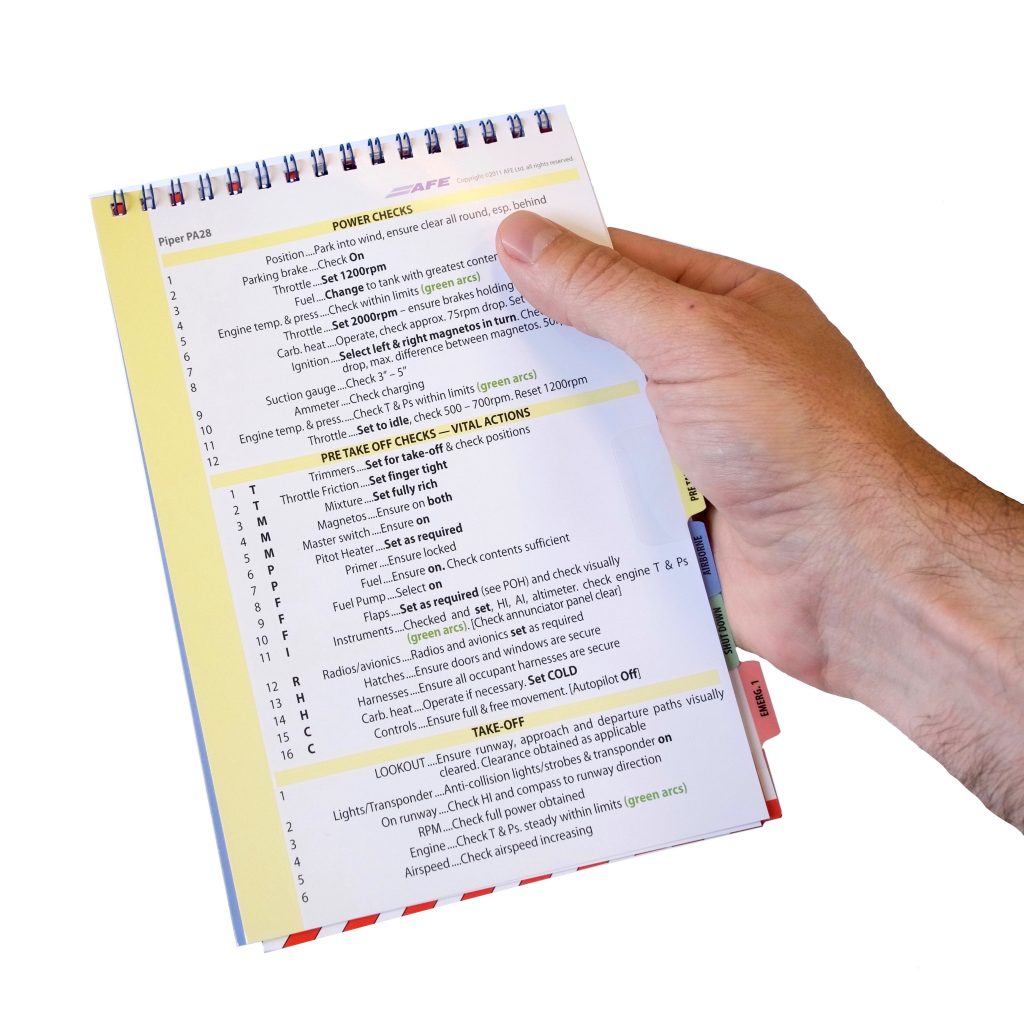Complying with rules and checklists is a good idea, but we must understand the reasons why they are there
In a flying club I instructed in some years ago I was taxiing out towards the runway one afternoon with a PPL student I hadn’t previously met, Chris. As we trundled along, a glance at the windsock told him which way the wind was blowing. Seeing that we were experiencing a head wind coming from the right, he moved the controls correctly into that direction, up-going aileron into wind, wheel held slightly aft to raise the elevator a bit. This was a good sign for the moment, I felt. Shortly a 90 degree turn on our required path took us along a taxiway which meant that we now had a tail wind. Chris moved the controls appropriately, and I quizzed him briefly about this action: “Why are you holding the controls like that?”. What I was looking for was brief explanation of the aerodynamic factors involved, but instead he looked slightly confused, having taken my query as though I had found some fault. “That’s what I was taught!” he replied. I reassured him it was the correct measure to take, but suggested we explore it in more depth during our post-flight debrief. We progressed to the remainder of the trip.

Later in our after-flight talk we explored this event in some more detail. His understanding of the reasons why this procedure was necessary was a little shaky. He hadn’t really grasped, either during ground training or self-study of the training manuals, the aerodynamic reasons for the procedure: he just knew it had to be done. Admittedly, this was better than the practice of some other students, who simply failed to hold the controls correctly at all while taxying in windy conditions. But at the same time, Chris was not fully engaged in the activity – he was being compliant with the rules, without fully understanding why. As his understanding deepened during our discussion, I could see a look of satisfaction appearing on his face, at more fully absorbing something important about flying. He had moved, in this specific case, from merely following the rule to understanding why it should be followed.
But at least, in the first instance, he was complying with it. On the other hand, every instructor will have met students who, no matter how intensive or detailed their training to date has been, simply don’t conform to established rules and procedures, or who continue to make the same mistakes. Dealing with this can be a challenging process. It can, moreover, be wrong to jump to conclusions about the reasons why particular students are not complying with required procedures. Deficiencies in their previous instruction are possible, of course, but the onus on learning is squarely on the student, and if they skipped that portion of the training manuals, or failed to listen or take proper notes, then they must shoulder that responsibility too.
Also, in spite of the aptitude testing that most training organisations and operators insist upon these days, it is still the case that sometimes unsuitable students can slip through the cracks. A leading provider of these tests told me some time ago they reckon they are about “80% accurate” in filtering out potential aviators who should possibly be better advised to seek a different profession. Trainers are left with the task of differentiating between these various non-compliant categories, and each of them require a different approach. Students may not know the rule in the first place, or they may know it but not fully understand it, or they may know it but are wilfully ignoring it. There is another category, of course, the one which is our ultimate goal to achieve as both students and instructors: those who are actively compliant with the rules and procedures, and understand why they are there.
The most problematic of these groups, and the one presenting the biggest challenge to safe operations, are those who are aware of the rules, and often the reasons behind them, but still fail to comply with them. An example was a student in a different club where I instructed many years ago. The type of aircraft we were flying required a gust lock to be fitted to the aileron control after flight. Everyone knew this – and yet this one guy continually left the gust lock in the cabin, and not where it should have been, on the wing. I went through the checklist with him one day, where the gust lock requirement was written in plain English. “Oh”, he said, “the other instructor told me it only had to be done at the end of the day, when flying was finished, or when strong winds were forecast”. I pointed out that, not infrequently, the last flight might well have been his own, even if it was early in the day. Plus, the aircraft were sometimes left un-flown for a period of days, perhaps awaiting servicing. How was he to know what winds might arise during that period? I refrained from asking him if he would jump in the river if “the other instructor” said it was a good idea. At the end of our next flight, he made a flourish of announcing “gust lock fitted!”, to my mock-applause. Lesson learned.
The point he made about what the other instructor said brings up a larger perspective on the question of compliance, that of the operational culture within which it is embedded. ‘Culture’ has become quite the buzzword in organisational theory in recent years, but its ubiquity renders it no less important as a way of understanding issues such as non-compliance with procedures. On first hearing it sounds like a woolly concept, but really it can simply be described as “the way things are done” in a particular organisation. Not the way they should be done – the way they are actually done. Sometimes lip service is paid to grand ideas in this regard. We can all agree that “safety is our number one priority”, but if an organisation does not follow that noble concept through with actual safe practices on the ground (and in the air), then it is a worse than useless idea, because announcing desirable aims can often lull us into presuming that we are achieving them by merely thinking the good thoughts. By contrast, the actual business of safety is about safe actions, one at a time, done for the right reasons. Instructors play a crucial role in fomenting the correct culture of compliance, most importantly by setting the example themselves. If, while giving a lesson early in a student’s training, you rush away from the aircraft and leave the gust lock unfitted, you can be sure they will do the same.
However correct compliance should never be itself a rote and uncritical activity. Sometimes we will find that rules and procedures themselves must change, for any number of reasons. Post-accident analysis can prompt reviews of procedures; airworthiness directives; the installation of new equipment; or changing types, among other causes, can all entail a reassessment of the way we do things. Organisational support for these changes is a crucial factor in ensuring that they are properly implemented.
In flying, more than many other human activities, the devil is in the details. But then, so are the angels.







